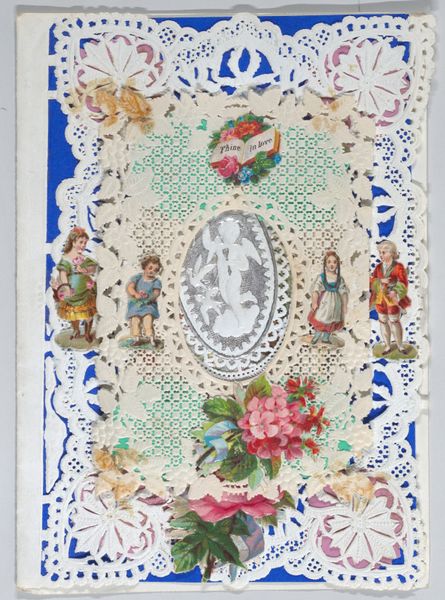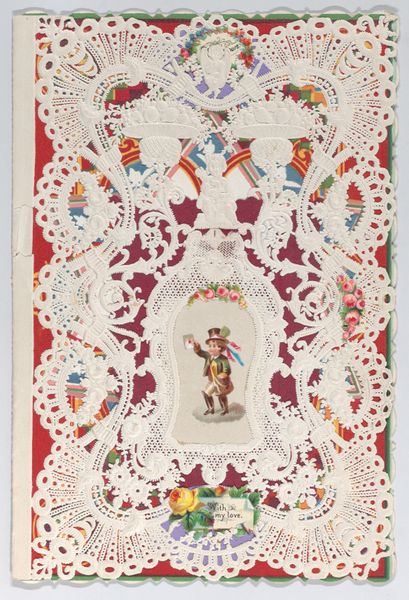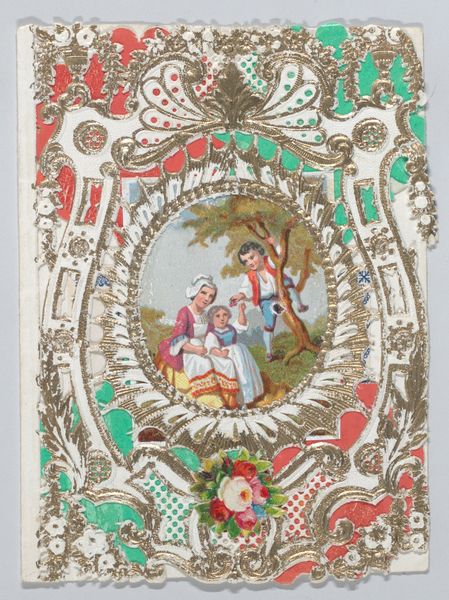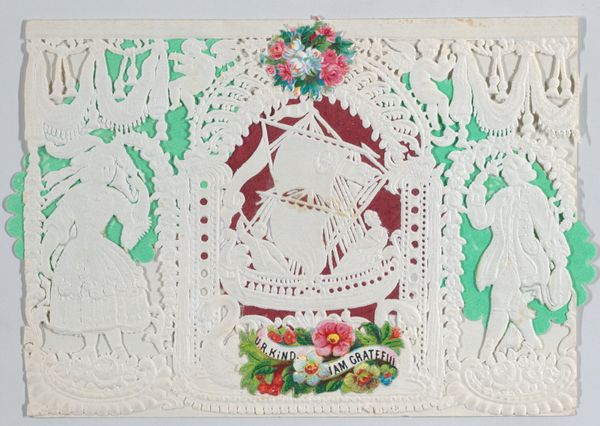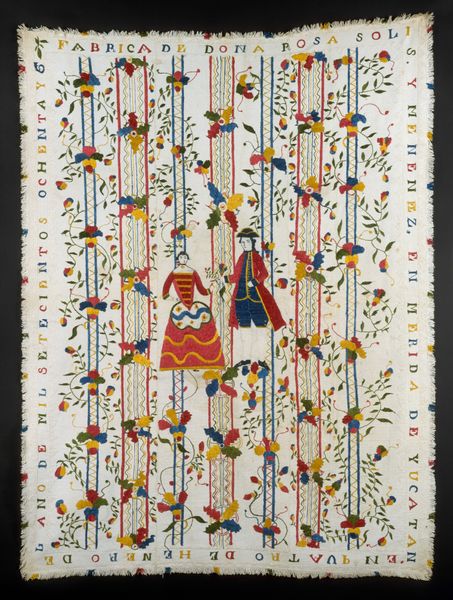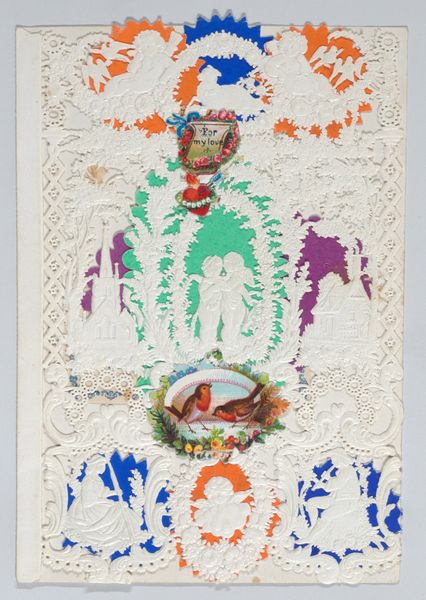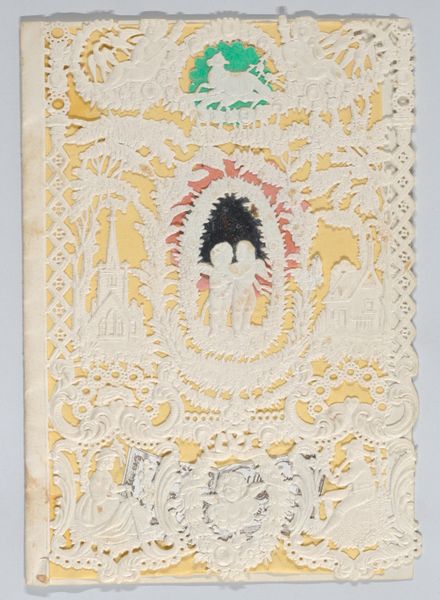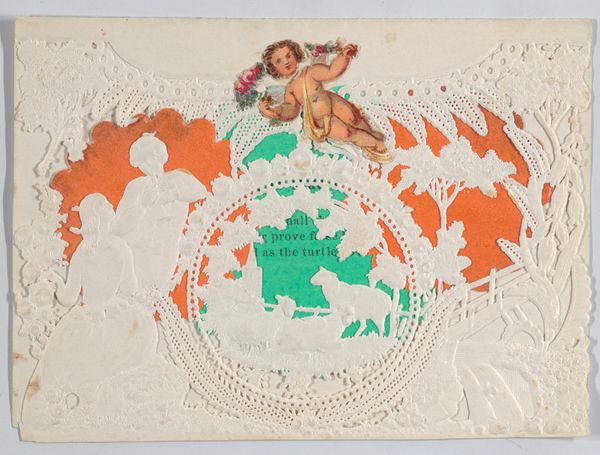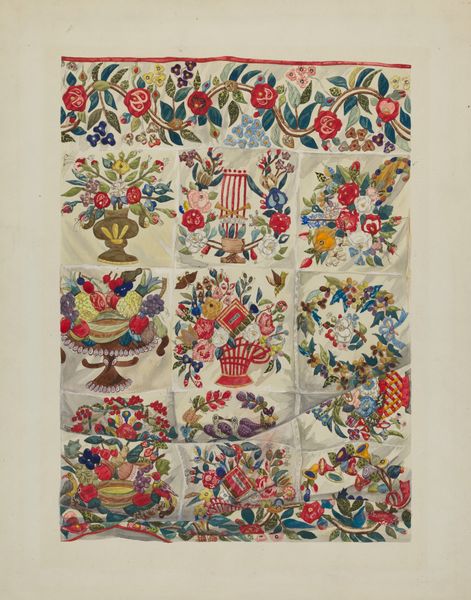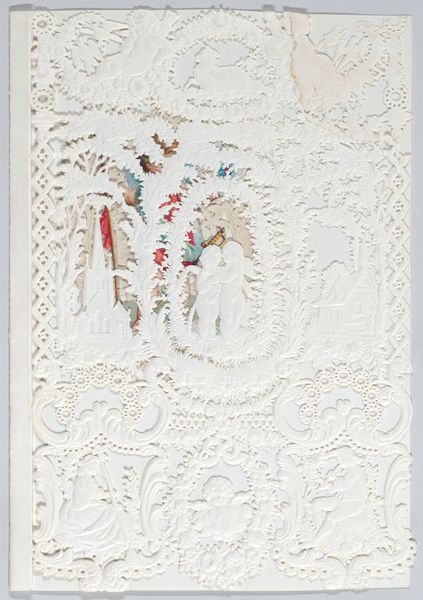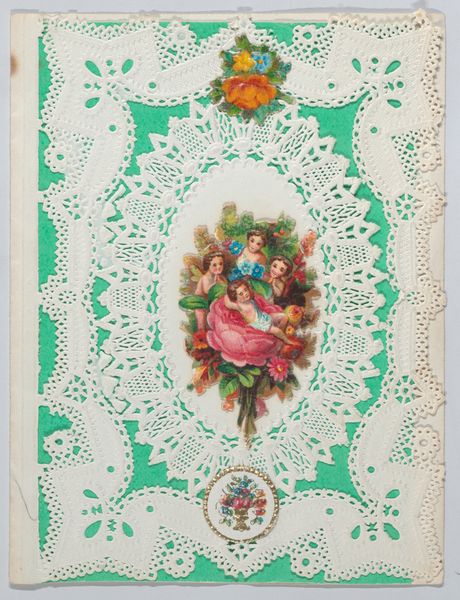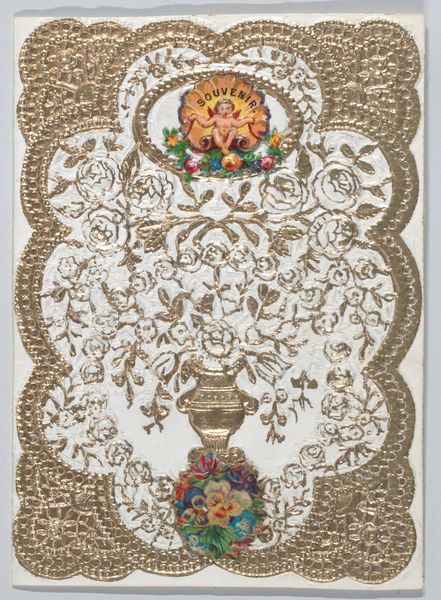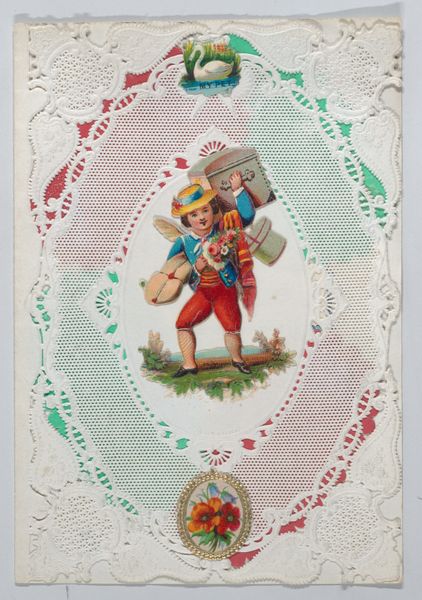
drawing, print, paper, watercolor
#
drawing
# print
#
folk art
#
paper
#
watercolor
#
folk-art
#
naive art
#
decorative-art
#
decorative art
#
miniature
#
watercolor
Dimensions: Width: 3 11/16 in. (9.3 cm) Length: 5 1/4 in. (13.4 cm)
Copyright: Public Domain
Editor: This is a delightful, intricate Valentine card from 1880, artist unknown. It uses drawing, print, watercolor, and paper. The card is charming and innocent but strikes me as odd—it seems to celebrate, with some pomp, something not particularly related to romance or passion. What’s your take on this piece? Curator: It is quite striking. These commercially produced, yet still highly personalized, cards were powerful signifiers. Consider that 1880 was a time of rapidly shifting gender roles. Notice the androgynous figures in the center? They could be read as subtly challenging the Victorian expectations of male and female presentation through its symbolism and visual cues. The artist strategically complicates our reading of normative sentimental displays. Editor: So you think the ambiguity of their presentation may hint at the blurring of traditional gender roles? Curator: Exactly. And the word "Constancy" across the top raises the question of societal expectations, particularly on women in that era. Also consider the way folk art traditions intersect with the emergence of mass-produced sentimental objects, making the meaning complex and a bit subversive, right? What's your take on its formal structure, this layering of forms and ornament? Editor: All the layered materials make it so elaborate and eye-catching. It's visually overwhelming in a way, pulling you in from every direction. Curator: And how does that visual dynamic impact your interpretation of its purpose? Is it merely decorative, or does the density suggest something more? Think about it: the over-the-top embellishments challenge conventional tastes of the era while engaging questions about mass culture. Editor: I see what you mean. Now that you mention that, the level of decoration itself could be a commentary on the excessiveness of Victorian society! Thanks, I’m definitely viewing it from a totally different angle now. Curator: Precisely, and perhaps that is its most potent message to us now: to reflect and engage critically with the intersectional dialogues shaping our world through the lens of its making.
Comments
No comments
Be the first to comment and join the conversation on the ultimate creative platform.
